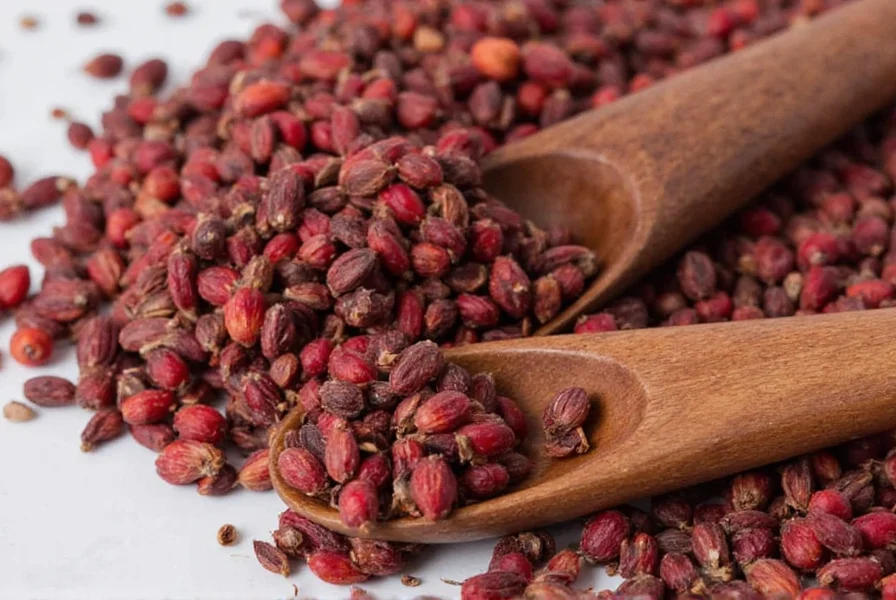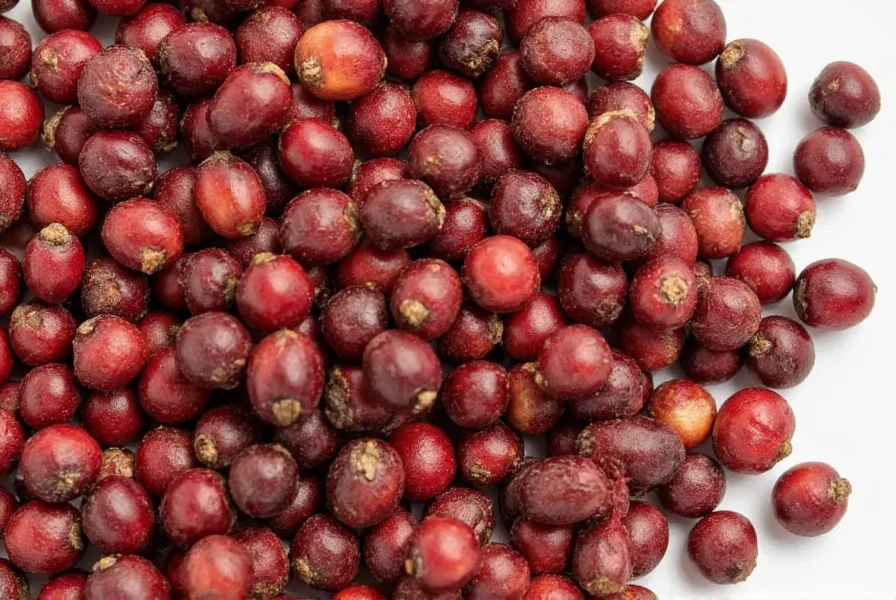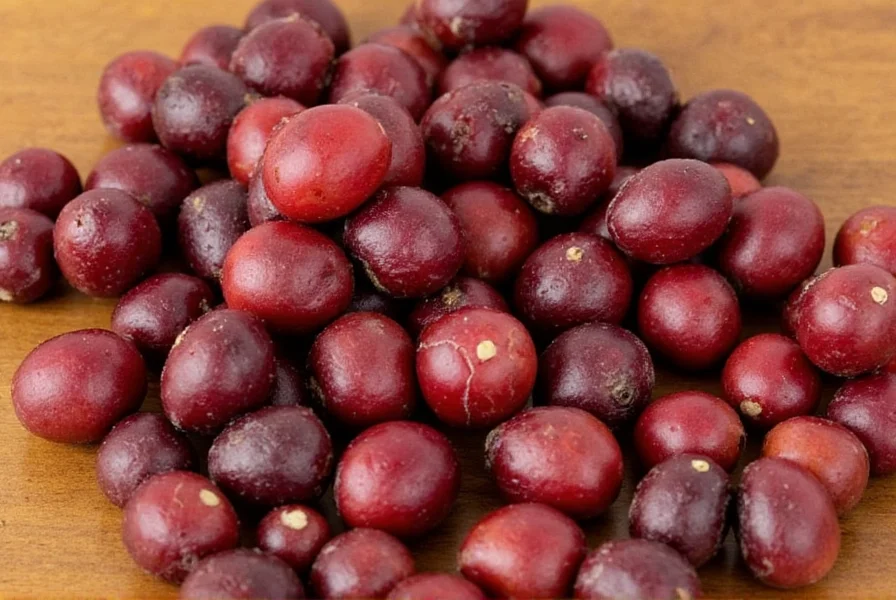Allspice berries, scientifically known as Pimenta dioica, have been treasured in culinary traditions for centuries. These small, dark brown berries measure approximately 5-7mm in diameter and contain two seeds within their hard outer shell. When properly dried, they develop their signature warm, sweet-spicy aroma that has made them indispensable in kitchens worldwide.
Origin and Historical Significance
Indigenous to the Greater Antilles, southern Mexico, and Central America, allspice was first encountered by Spanish explorers in the Caribbean. The Taino people called it pimenta, which later influenced its scientific name. Spanish explorers mistakenly believed it was a hybrid of several spices, hence the English name "allspice." By the 16th century, allspice became one of Jamaica's most valuable exports, with strict controls on its cultivation to maintain market dominance.
Flavor Profile and Characteristics
Allspice berries deliver a complex flavor profile that explains their culinary versatility:
| Flavor Component | Intensity | Comparable Spice |
|---|---|---|
| Warmth | High | Cinnamon |
| Peppery Notes | Moderate | Black Pepper |
| Sweetness | Moderate | Nutmeg |
| Floral Undertones | Subtle | Cloves |
The unique combination of these elements creates what food scientists describe as a "harmonious spice symphony"—where no single flavor dominates but rather complements the others. This balance makes allspice berries particularly valuable in complex recipes where multiple spices might otherwise compete.
Culinary Applications of Allspice Berries
Chefs prefer whole allspice berries for certain applications because they release flavors more gradually than ground spice. Understanding how to use allspice berries in cooking properly can transform your dishes:
- Pickling and brines: Add 4-5 berries per quart of liquid for subtle warmth without overpowering
- Stocks and broths: Include 3-4 berries in mirepoix for depth in meat-based stocks
- Baking: Place berries in cheesecloth with other spices for holiday cakes and fruitcakes
- Rubs: Lightly crush berries before mixing with salt and pepper for meat rubs
For traditional Jamaican jerk seasoning, allspice berries are essential, typically combined with Scotch bonnet peppers, thyme, and scallions. The berries' natural oils help carry other flavors deep into meat during the marinating process.

Whole Berries vs. Ground Allspice
Understanding the difference between allspice berries vs ground allspice is crucial for optimal flavor:
- Shelf life: Whole berries retain flavor for 2-3 years when properly stored, while ground allspice loses potency within 6-12 months
- Flavor intensity: Ground allspice delivers immediate impact, while berries release flavors gradually during cooking
- Application: Use whole berries in liquid-based recipes; ground for baking and dry rubs
For best results, toast whole berries in a dry skillet for 1-2 minutes before grinding to enhance their aromatic compounds. This simple technique maximizes the allspice berry flavor profile in your dishes.
Substituting Allspice Berries
When you need allspice berry substitutes, consider these options:
- For 1 teaspoon of ground allspice: ½ teaspoon cinnamon + ¼ teaspoon nutmeg + ¼ teaspoon cloves
- For whole berries: Tie equal parts cinnamon stick, whole cloves, and a small piece of nutmeg in cheesecloth
- In Caribbean recipes: Consider omitting rather than substituting, as the unique flavor is difficult to replicate
Remember that substitutes never perfectly match authentic allspice berries, which is why many chefs recommend keeping a small supply of the genuine article for special recipes.
Health Benefits of Allspice Berries
Research into the health benefits of allspice berries reveals several potential advantages:
- Digestive support: Eugenol content may help reduce intestinal gas and bloating
- Antioxidant properties: Contains significant amounts of phenolic compounds that combat oxidative stress
- Anti-inflammatory effects: May help reduce inflammation markers in the body
- Blood sugar regulation: Preliminary studies suggest potential benefits for glucose metabolism
These benefits are most pronounced when using whole berries rather than pre-ground spice, as the essential oils remain better preserved. However, allspice should complement—not replace—medical treatments for health conditions.
Proper Storage Techniques
To maximize shelf life and maintain flavor, follow these how to store allspice berries guidelines:
- Store in an airtight container away from light and heat
- Keep whole berries separate from ground spices to prevent flavor transfer
- For long-term storage (beyond 18 months), refrigerate in a glass container
- Check for freshness by crushing a berry and smelling for strong aromatic notes
Properly stored Jamaican allspice berries maintain their complex flavor profile for up to three years, making them one of the longest-lasting whole spices when cared for correctly.

Frequently Asked Questions
Are allspice berries actually a blend of different spices?
No, allspice berries are not a blend but the dried fruit of a single plant species (Pimenta dioica). The name comes from their flavor profile that resembles a combination of cinnamon, nutmeg, and cloves, but they're a distinct spice harvested from one type of tree.
Can I substitute ground allspice for whole berries in recipes?
Yes, but with adjustments. Use ½ teaspoon ground allspice for every 6 whole berries. However, whole berries provide more nuanced flavor in liquid-based recipes as they release oils gradually during cooking, while ground allspice delivers immediate impact better suited for baking.
What makes Jamaican allspice berries superior to other varieties?
Jamaican allspice berries benefit from the island's unique terroir—volcanic soil, tropical climate, and traditional curing methods. These factors produce berries with higher concentrations of essential oils (particularly eugenol), resulting in more complex flavor and stronger aroma compared to varieties grown in other regions.
How can I tell if my allspice berries have gone bad?
Fresh allspice berries should be dark brown with a strong, sweet-spicy aroma. If they've lost their fragrance, appear faded, or feel lightweight (indicating dried-out oils), they've likely lost potency. Properly stored berries maintain quality for 2-3 years, while compromised storage reduces this timeframe significantly.











 浙公网安备
33010002000092号
浙公网安备
33010002000092号 浙B2-20120091-4
浙B2-20120091-4